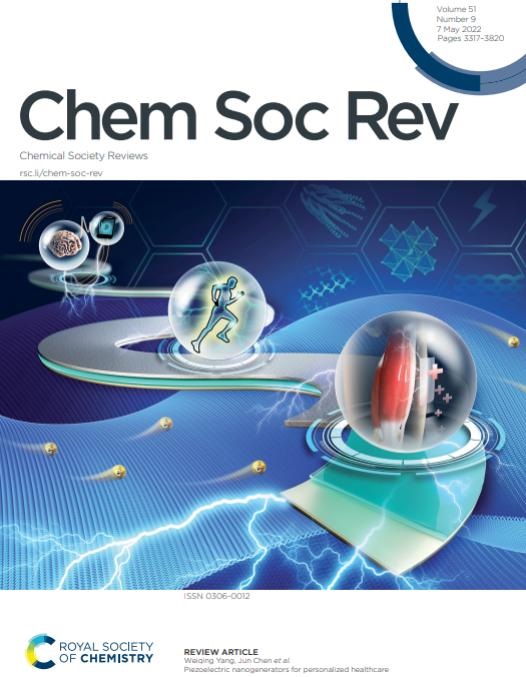Tin-halide perovskites for light-emitting diodes
IF 40.4
1区 化学
Q1 CHEMISTRY, MULTIDISCIPLINARY
引用次数: 0
Abstract
Tin-halide perovskite light-emitting diodes (PeLEDs) have garnered significant attention due to their exceptional potential in achieving high-performance and eco-friendly light-emitting devices. Tin-halide PeLEDs have recently achieved notable breakthroughs in device efficiency, spectral tunability, and long-term operational stability. However, the facile oxidation of Sn2+ and rapid crystallization kinetics have substantially constrained their further development. The oxidation of Sn2+ and fast crystallization of the perovskite layer lead to a p-doping nature and high defect densities, which result in low photoluminescence quantum yield (PLQY) and unbalanced charge injection. Therefore, an in-depth understanding of the oxidation and crystallization processes is key to the further advancement of tin-halide PeLEDs. In this review, we discuss the basic properties of tin-halide perovskites. A comprehensive analysis of the fundamental mechanisms underlying the efficiency limitations and stability issues in these devices is provided. Subsequently, we present the latest advances in achieving efficient and stable operation, which provides a clear set of design rules for the development of high-efficiency and stable tin-halide PeLEDs. The remaining challenges and perspectives toward developing high-efficiency and stable optoelectronic devices are also discussed, with the aim of optimizing the PLQY, emission wavelength control, balanced charge injection, and commercialization.

发光二极管用卤化锡钙钛矿
卤化锡钙钛矿发光二极管(PeLEDs)因其在实现高性能和环保发光器件方面的特殊潜力而受到广泛关注。卤化锡发光二极管最近在器件效率、光谱可调性和长期运行稳定性方面取得了显著的突破。然而,Sn2+的易氧化和快速结晶动力学极大地限制了它们的进一步发展。Sn2+的氧化和钙钛矿层的快速结晶导致了p掺杂性质和高缺陷密度,导致了低的光致发光量子产率(PLQY)和不平衡的电荷注入。因此,深入了解氧化和结晶过程是进一步发展卤化锡发光二极管的关键。本文综述了卤化锡钙钛矿的基本性质。对这些装置的效率限制和稳定性问题的基本机制进行了全面分析。随后,我们介绍了实现高效稳定运行的最新进展,为开发高效稳定的卤化锡发光二极管提供了一套明确的设计规则。讨论了开发高效稳定光电器件的挑战和前景,以优化PLQY、发射波长控制、平衡电荷注入和商业化为目标。
本文章由计算机程序翻译,如有差异,请以英文原文为准。
求助全文
约1分钟内获得全文
求助全文
来源期刊

Chemical Society Reviews
化学-化学综合
CiteScore
80.80
自引率
1.10%
发文量
345
审稿时长
6.0 months
期刊介绍:
Chemical Society Reviews is published by: Royal Society of Chemistry.
Focus: Review articles on topics of current interest in chemistry;
Predecessors: Quarterly Reviews, Chemical Society (1947–1971);
Current title: Since 1971;
Impact factor: 60.615 (2021);
Themed issues: Occasional themed issues on new and emerging areas of research in the chemical sciences
 求助内容:
求助内容: 应助结果提醒方式:
应助结果提醒方式:


